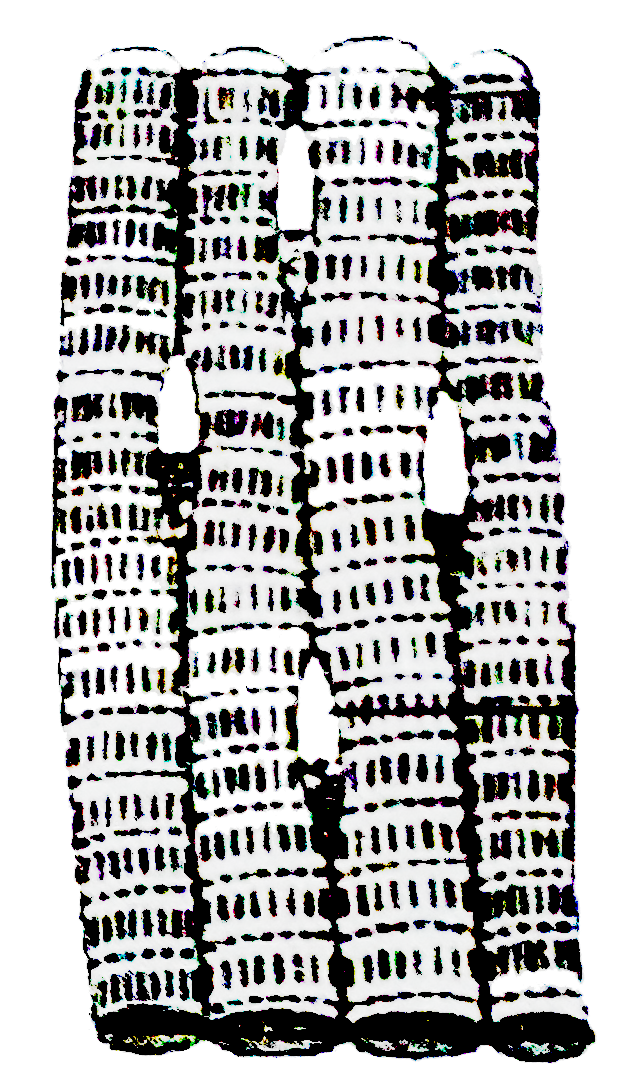Which tissue is most common type in plants? Describe its characteristics.
Step-by-Step Text Solution:
1. Identify the Most Common Tissue in Plants:
The most common type of tissue in plants is parenchyma.
2. Characteristics of Parenchyma:
- Cell Structure: Parenchyma cells are living cells. They can be found in various parts of the plant, including the cortex, pith region, and palisade tissue.
- Cell Wall: The cell walls of parenchyma are thin and primarily composed of cellulose. They may also contain hemicellulose and pectin.
- Cell Shape: Parenchyma cells can have various shapes, including spherical, oval, or round.
- Intercellular Space: Parenchyma cells are usually closely packed, resulting in minimal intercellular space between them.
- Vacuoles: These cells often contain large vacuoles, which play a role in storage and maintaining turgor pressure.
3. Functions of Parenchyma:
- Storage: One of the primary functions of parenchyma tissue is the storage of food (such as starch) and water.
- Photosynthesis: In certain locations, such as the palisade tissue in leaves, parenchyma cells are involved in photosynthesis.
- Respiration: Parenchyma cells also participate in respiration processes.
- Conduction: They can assist in the conduction of water and nutrients throughout the plant.
4. Visual Representation:
A diagram of parenchyma tissue would show closely packed cells with minimal intercellular space, along with the presence of vacuoles and nuclei.
The most common type of tissue in plants is parenchyma.
- Cell Structure: Parenchyma cells are living cells. They can be found in various parts of the plant, including the cortex, pith region, and palisade tissue.
- Cell Wall: The cell walls of parenchyma are thin and primarily composed of cellulose. They may also contain hemicellulose and pectin.
- Cell Shape: Parenchyma cells can have various shapes, including spherical, oval, or round.
- Intercellular Space: Parenchyma cells are usually closely packed, resulting in minimal intercellular space between them.
- Vacuoles: These cells often contain large vacuoles, which play a role in storage and maintaining turgor pressure.
- Storage: One of the primary functions of parenchyma tissue is the storage of food (such as starch) and water.
- Photosynthesis: In certain locations, such as the palisade tissue in leaves, parenchyma cells are involved in photosynthesis.
- Respiration: Parenchyma cells also participate in respiration processes.
- Conduction: They can assist in the conduction of water and nutrients throughout the plant.
A diagram of parenchyma tissue would show closely packed cells with minimal intercellular space, along with the presence of vacuoles and nuclei.
Similar Questions
the most common type of ovule is
View SolutionMost common type of DNA is
View SolutionThe most common type of tapetum is
View SolutionDescribe characteristics of heartwood.
View SolutionThe most common type of ovule in angiosperm is:
View SolutionThe most common type of collenchyma is
View Solutionin Brain , most common types of lipids are
View SolutionWhich tissues provide mechanical strength to the plant ? Describe their structure and distribution in the plant body.
View SolutionIdentify the tissue shown in the diagram and match with its characteristics and its location
 View Solution
View SolutionIdentify the tissue shown in the diagram and match with its characteristics and its location
 View Solution
View Solution

